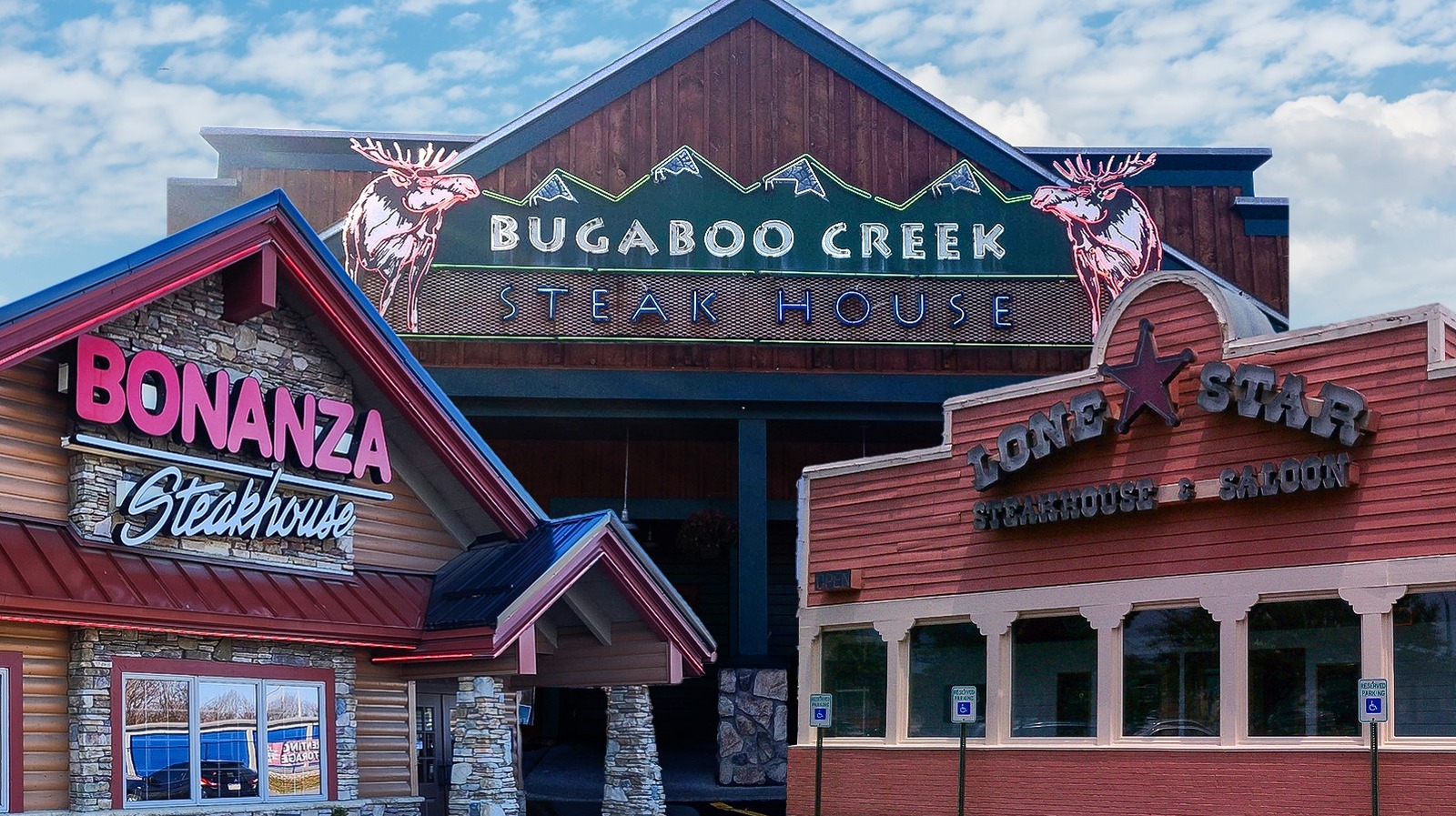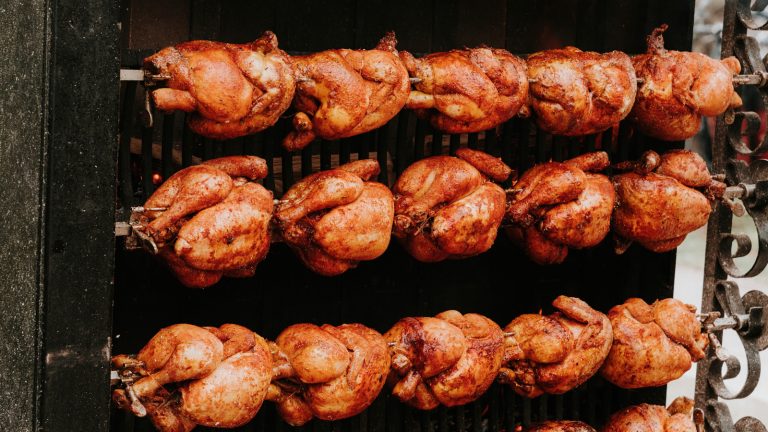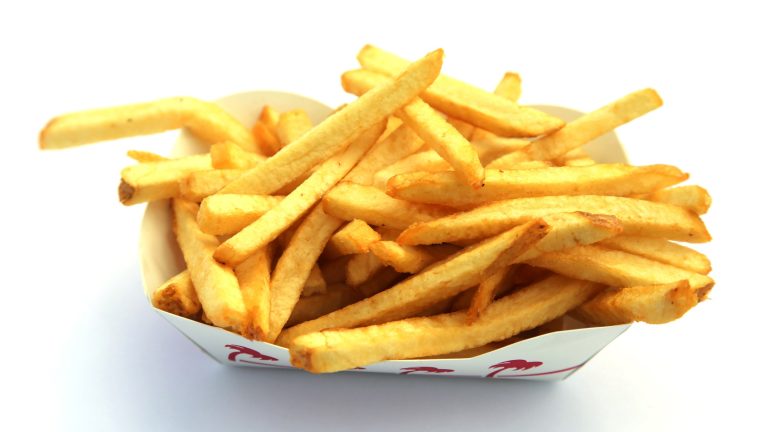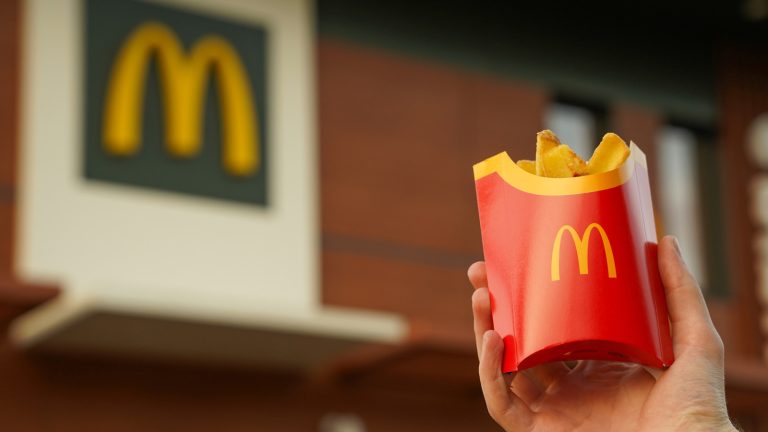The American steakhouse has long occupied a central place in the nation’s culinary and cultural imagination, evoking old-school luxury and suburban comfort. The earliest example, New York City’s Delmonico’s, opened in 1837 and introduced the concept of a la carte dining in an era when most restaurants offered only prix fixe meals. By the early 20th century, steakhouses became synonymous with prestige and power. Many important decisions in the political and business sectors came to be made while digging into a ribeye and sipping an aged Bordeaux. Steakhouses were seen as the height of social stratification, an emblem of the opulence of the elite upper class during the Gilded Age.
Over time, however, the steakhouse morphed from a mark of well-heeled decadence into something far more accessible. In the post-World War II era, the rise of the automobile, suburban sprawl, and interstate highways gave birth to massive fast food chains. However, another type of chain restaurant emerged: the middle-brow steakhouse. Blending casual elegance with affordability, these establishments catered to families, travelers, and middle-class diners hungry for hearty, protein-forward meals.
From Tudor-themed dining rooms to train cars and animatronic moose heads, chain steakhouses of the 1960s through the 1980s offered both theatrical atmosphere and culinary consistency. However, as tastes shifted and economic pressures mounted, many favorites vanished. Below, we revisit 10 of the most memorable steakhouse chains that defined mid-century Americana — some of which are being rediscovered by nostalgic diners and investors alike.
Steak and Ale
Founded in 1966 by Norman Brinker in Dallas, Steak and Ale revolutionized casual dining by offering affordable steak in a wood-paneled setting. While many U.S.-based steakhouse chains have branded themselves as Texan, Brazilian, or Australian, Steak and Ale is unique for its English theme, with its Tudor-style dining rooms and its marketing of beer as “ale.” Its major innovation was the now-ubiquitous salad bar, which allowed customers to build their own meals replete with vegetables, dressings, cold cuts, fruits, and other less-expected add-ons. While a novelty at the time, these verdant buffets are now a standard feature across steakhouse restaurants, though salad bar quality can notably vary across restaurants. Steak and Ale’s emphasis on consistent quality and comfortable ambiance helped the chain flourish across the U.S. through the 1970s and ’80s.
However, increased competition in the casual dining sector and changing consumer tastes led to its Chapter 7 bankruptcy in 2008. But Steak and Ale’s story isn’t entirely over. In 2024, the brand reopened a new flagship location in Burnsville, Minnesota, hoping to recapture the magic of its original concept while modernizing the menu for today’s diners. This resurrection is part of a broader trend of legacy brand revivals, betting on Gen-X and Boomer nostalgia to reignite interest in long-lost comfort food institutions. For those who remember nursing pints in dimly lit wooden booths, Steak and Ale’s return is a welcome blast from the past.
Mr. Steak
Founded in 1962 in Colorado Springs by James A. Mather, Mr. Steak grew to nearly 300 locations at its peak. The chain combined reasonably priced sirloins with a family-friendly atmosphere — think dark wood interiors, red vinyl booths, and a touch of mid-century kitsch. Its appeal lay in simplicity: solid steak dinners featuring USDA Choice beef at prices working families could afford.
However, as the market grew saturated, Mr. Steak attempted to diversify its menu with items like seafood, casseroles, and pasta. This deviation from its core strength alienated loyal customers and increased operational complexity. Industry analysts have long warned that unfocused menus can lead to brand dilution and a fall in quality, a fate that contributed to Mr. Steak’s decline. In addition, the company’s decision to co-sign leases with franchisees incurred an enormous debt that could not be liquidated.
By the late 1980s, financial struggles and increased competition led to the chain’s bankruptcy. Although a few independently operated locations hung on for a while, the Mr. Steak brand ultimately disappeared, leaving behind a legacy of modest meals and American optimism. Interestingly, the Mr. Steak name has been repurposed by a startup promising direct-to-consumer delivery of premium cuts of beef – a testament to the contemporary demands of the market. Where comfortable, affordable chain restaurants once reigned supreme, many of today’s consumers now look for ways to conveniently acquire top-notch ingredients for at-home preparations.
York Steak House
Launched in 1966 by Berndt Gros and Eddie Grayson in Columbus, Ohio, York Steak House found success by combining low-cost steak meals with cafeteria-style service — an ideal formula for bustling shopping malls during the retail boom of the 1970s. It was eventually acquired by General Mills, a company perhaps better known for breakfast cereal than for juicy steaks. York Steak House was eventually added to the roster of General Mills’ Darden Restaurant Group, a hospitality venture that would go on to launch Red Lobster and Olive Garden.
What made York Steak House stand out was its unique hybrid model: upscale steakhouse dishes offered in a self-service format. This balance of perceived quality and efficiency worked well until shifting mall economics and changing dining preferences undermined its appeal. Like many other standbys of the golden age of mall food courts, York Steak House faded into obscurity. By the late 1980s, the York franchise began to fall apart, but one remains in Columbus, very close to the site of the original location. Luckily for its most loyal customers, this lone outpost was swiftly purchased by the owner of a local diner in 2024 when the building went up for sale.
For those who can imagine balancing a tray of steak, baked potatoes, and Jell-O parfaits under fluorescent lights, York Steak House remains a nostalgic symbol of suburban mall culture at its peak. A pioneer of the franchise model and of providing affordable yet quality meals, York Steak House also set the standard for family-oriented accessible steakhouse dining.
Victoria Station
Victoria Station opened in the late 1960s in San Francisco, a concept dreamed up by three Cornell University hotel management students. Inspired by vintage trains and by the aesthetics of the London Underground, its dining rooms were housed in repurposed railway cars, complete with luggage racks and antique signage. At its peak, the chain boasted over 100 locations globally and was beloved for its prime rib, kitschy ambiance, and engaging service, which some have remarked was some of the best in the industry.
Despite all of its literal and figurative bells and whistles, Victoria Station filed for bankruptcy in 1986. Operational costs were high, and the novelty wore off as consumer preferences shifted toward sleeker, faster formats. The last U.S. location — in Salem, Massachussets – closed in 2017, though international versions have persisted. Today, Victoria Station’s legacy is felt in Malaysia of all places, with several locations still operating in Kuala Lumpur and Penang.
Still, Victoria Station’s legacy lives on in restaurant design circles as a prime example of experiential dining. While some foodies might seek out culinary experiences through train travel, Victoria Station proved that the locomotive aesthetic is itself a draw for some diners. Its blend of showmanship and solid food, and its subsequent rise and fall, foreshadowed later themed restaurants like Rainforest Café and Planet Hollywood — only with better roast beef.
Valle’s Steak House
Donald Valle founded Valle’s Steak House in 1933 in Portland, Maine. These cavernous restaurants combined steak and seafood in vast dining halls that could seat and feed hundreds. This East Coast empire expanded rapidly in the 1960s and ’70s, at one point operating 25 restaurants in several states. The restaurant heavily marketed the lobster on its menu — a food once so plentiful in New England that it was served to prisoners that has since become a hallmark of luxury and fine dining.
Valle’s embodied postwar affluence: large portions, low prices, and the promise of a fine night out for the working family. However, the factors that contributed to its strength turned into massive liabilities. Huge venues were costly to run, and the rise of smaller, more agile competitors left Valle’s behind. The last location closed in 2000, though many blogs and personal websites bemoan its passing. Valle’s demise reflects a broader trend in American dining: the fall of the mega-restaurant. In an age where intimate, niche eateries with highly personalized service and menus dominate, Valle’s remains a towering ghost of steakhouse history. Yet as Portland, Maine becomes increasingly recognized as a foodie paradise, perhaps we ought to remember one of the city’s first nationally-recognized restaurants.
Bonanza Steak House
In 1963, Dan Blocker — “Hoss” Cartwright of the hit show “Bonanza” – founded Bonanza Steakhouse, hoping to bring cowboy-style hospitality to the dinner table. Known for its hearty meals and family-oriented vibe, the chain spread rapidly, eventually merging with the similarly themed Ponderosa Steakhouse. Though the Ponderosa brand lives on under FAT Brands Inc., the Bonanza name has largely faded, considered outdated in today’s marketplace. A few locations still use the Bonanza name, catering to locals and nostalgic travelers.
What set Bonanza apart was its embrace of the Western mythos: rustic decor, “sheriff specials,” and the sense of frontier abundance. These elements appealed to 1970s and ’80s families seeking value dining with a bit of theatrical charm. Their famed Tuesday-night ribeye is still a source of online nostalgia posting. However, as national branding trended toward minimalism and international cuisines gained ground, Bonanza’s cowboy-themed appeal grew stale.
The chain’s fall reflects the limits of celebrity-driven branding — especially when tied to the pop culture icons of a specific era. Yet for many diners, Bonanza Steakhouse still evokes childhood memories of Western-themed decor and all-you-can-eat buffets. Fans continue to share stories online, proving that for every vanished brand, there’s a loyal base who still longs for one more steak dinner under a wagon wheel chandelier.
Lone Star Steakhouse and Saloon
Founded in 1989 in North Carolina of all places, Lone Star Steakhouse aimed to recreate a Texan roadhouse experience, geography notwithstanding. With over 260 locations at its height, it offered steaks, sweet tea, and peanut shells on the floor, becoming a staple of the 1990s casual dining boom. Wild west decor and a beef-oriented menu played on the image of the Lone Star State pedaled in the Western films that were popular at the time. Yet rapid expansion, financial overreach, and changing diner preferences ultimately doomed the chain. By 2019, the last U.S. location had shuttered. Analysts note that while theming can attract first-time diners, long-term sustainability requires operational consistency and menu innovation — areas where Lone Star fell behind.
The chain was especially popular for its boisterous ambiance, hearty portions, and Americana flair. Waitstaff in cowboy gear, country music playlists, and decor loaded with Texas iconography created an immersive, if sometimes over-the-top, environment. Lone Star’s menu, while once appealing, failed to evolve with dietary trends, such as increasing demand for plant-based or globally inspired options. Ultimately, Lone Star became a victim of its own gimmick: its appeal narrowed over time, making it vulnerable to fresher concepts. Today, it’s remembered fondly by those who relished its larger-than-life persona, even as it serves as a cautionary tale in restaurant branding.
Bugaboo Creek
Launched in 1993 in Rhode Island, Bugaboo Creek Steakhouse blended kitsch and comfort with Canadian-themed decor, animatronic characters, and hearty fare. Patrons remember its talking moose heads, moving fireplaces, and log-cabin ambiance — equal parts roadside attraction and restaurant. Despite an enthusiastic fan base, financial instability led to its rapid decline in the early 2010s. Most locations shuttered, and attempts at revival were short-lived. Still, online nostalgia groups and fan pages hint at lingering affection.
Themed like a lodge deep in the Canadian Rockies, Bugaboo offered more than steak — it offered spectacle. The bizarre environs were perfectly designed to entertain children, leading to the restaurant’s reputation as a place for family gatherings. But as operating costs rose and the novelty wore thin, many locations struggled to maintain profitability. With the rise of health-conscious dining, environmental concerns, and minimalist aesthetics, Bugaboo’s animatronics and double-loaded baked potatoes came to seem tacky and low-class. Yet for many families, it represented a time when eating out was an experience, not simply a transaction. While its mechanized critters are now silent and still, Bugaboo Creek’s legacy lives on in fond retellings and blurry childhood photos — an echo of a once-vibrant dining lodge where the moose always had something to say.
Beefsteak Charlie’s
Originally opened in 1910, Beefsteak Charlie’s began franchising in the 1970s and was known for its casual ambiance, horse-racing memorabilia, and beef-forward menu. At its peak, it offered an all-you-can-eat salad bar and unlimited sangria: a combination that proved too generous for its own good. After a poorly executed acquisition in the mid-1980s, quality and service declined. The chain shut down by the end of the decade, though its marketing slogan — “I’ll feed you like there’s no tomorrow” — remains iconic. Charlie’s was a sensory overload in the best way: wood-paneled walls, vintage sports decor, and enthusiastic servers who poured wine as if it were water. For many, it felt like a club you didn’t need to join. The restaurant’s appeal lay in its unabashed embrace of excess during a period when bigger was often seen as better.
Yet that same exuberant, all-out ethos contributed to its undoing. Unlimited promotions strained margins, while shifting economic conditions and poor franchise oversight hastened its demise. Still, the chain’s audacity and character continue to inspire fond remembrances. In today’s world of portion control and health disclaimers, Beefsteak Charlie’s feels like a deliciously reckless fever dream of the dining past.





